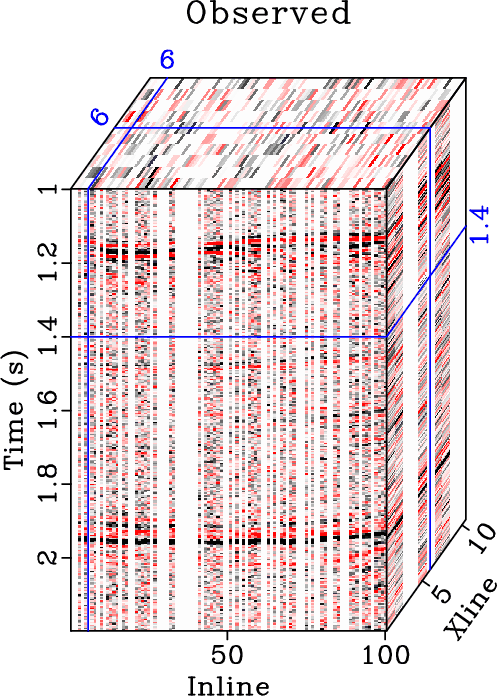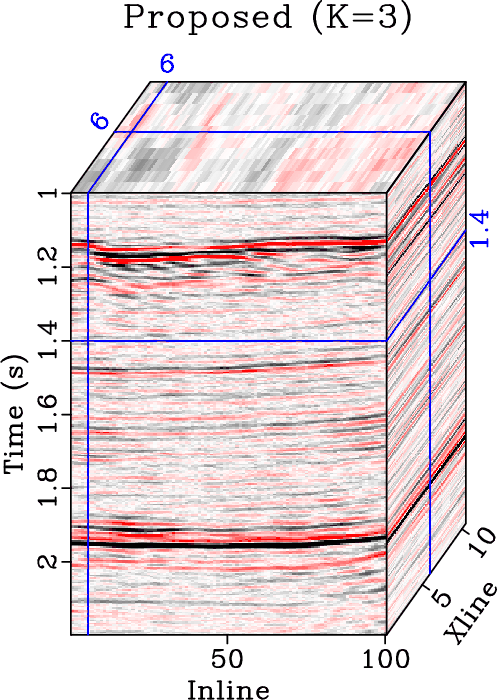A new paper is added to the collection of reproducible documents: Plane-wave orthogonal polynomial transform for amplitude-preserving noise attenuation


Amplitude-preserving data processing is an important and challenging topic in many scientific fields. The amplitude-variation details in seismic data are especially important because the amplitude variation is directly related with the subsurface wave impedance and fluid characteristics. We propose a novel seismic noise attenuation approach that is based on local plane-wave assumption of seismic events and the amplitude preserving capability of the orthogonal polynomial transform (OPT). The OPT is a way for representing spatially correlative seismic data as a superposition of polynomial basis functions, by which the random noise is distinguished from the useful energy by the high orthogonal polynomial coefficients. The seismic energy is the most correlative along the structural direction and thus the OPT is optimally performed in a flattened gather. We introduce in detail the flattening operator for creating the flattened dimension, where the OPT can be applied subsequently. The flattening operator is created by deriving a plane-wave trace continuation relation following the plane-wave equation. We demonstrate that both plane-wave trace continuation and OPT can well preserve the strong amplitude variation existing in seismic data. In order to obtain a robust slope estimation performance in the presence of noise, a robust slope estimation approach is introduced to substitute the traditional method. A group of synthetic, pre-stack and post-stack field seismic data are used to demonstrate the potential of the proposed framework in realistic applications.







